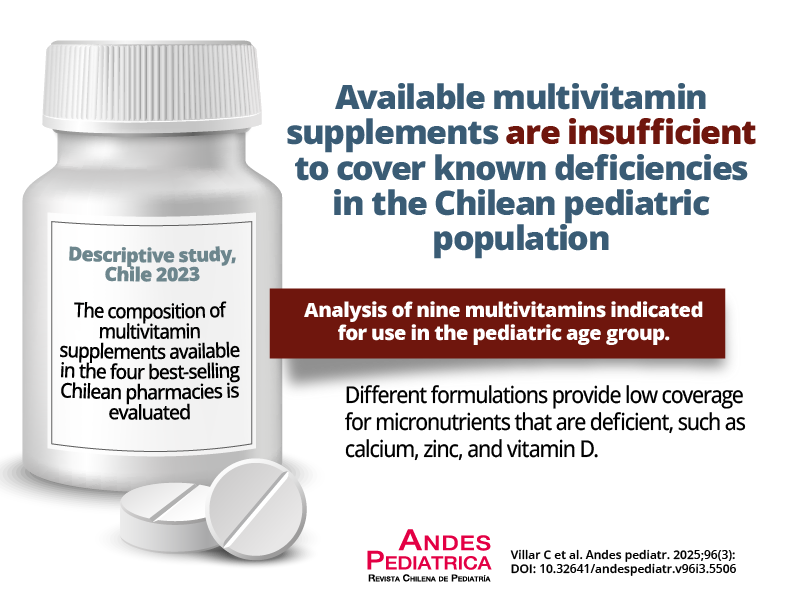Abstract
Multivitamin/mineral (MVM) supplements are widely available and promoted to complete nutritional intake. There is no standard definition and their compositions vary.
Objective: To evaluate the percentage of adequacy (PA) of the content according to the micronutrient intake requirement of MVM for pediatric age.
Materials and Method: Descriptive study. Data was obtained from publicly available information by reviewing the websites of the four pharmacies with the highest sales, selecting those labeled for pediatric age, and excluding those with only one component, indicated for specific groups or purposes. For those available in 2 or more pharmacies and with > 10 components, the PA (amount of micronutrient/recommended dietary intake) *100 was calculated, according to sex, and divided into two age groups: 9-13 and 14-18 years.
Results: A total of 164 MVM were found, 44 (26.8%) for pediatric age, resulting in 9 for PA analysis, and 7 for the 9-13 years group. They had a minimum total of 15 components and a maximum of 21, with >19 in 7/9 (77.8%). 12 vitamins in 7/9 (77.8%) MVM and > 7 minerals in 7/9 (77.8%). The micronutrients with PA < 25% were vitamin D, K, calcium, magnesium, fluoride, zinc, phosphate, potassium, and sodium; between 76-99% vitamin A, iodine, copper, chromium for males and PA > 100% vitamin C, B1, B2, niacin, pantothenic acid, biotin, pyridoxine, molybdenum, selenium, and chromium for females. There were no significant differences in PA for each of the micronutrients according to the ages compared.
Conclusions: There is a varied offer of MVM and with different formulations, presenting low coverage for micronutrients that are in deficiency such as calcium, zinc, and vitamin D, contrary to full coverage in micronutrients not studied as deficient in the pediatric population.

This work is licensed under a Creative Commons Attribution 4.0 International License.
Copyright (c) 2025 Revista Chilena de Pediatría


